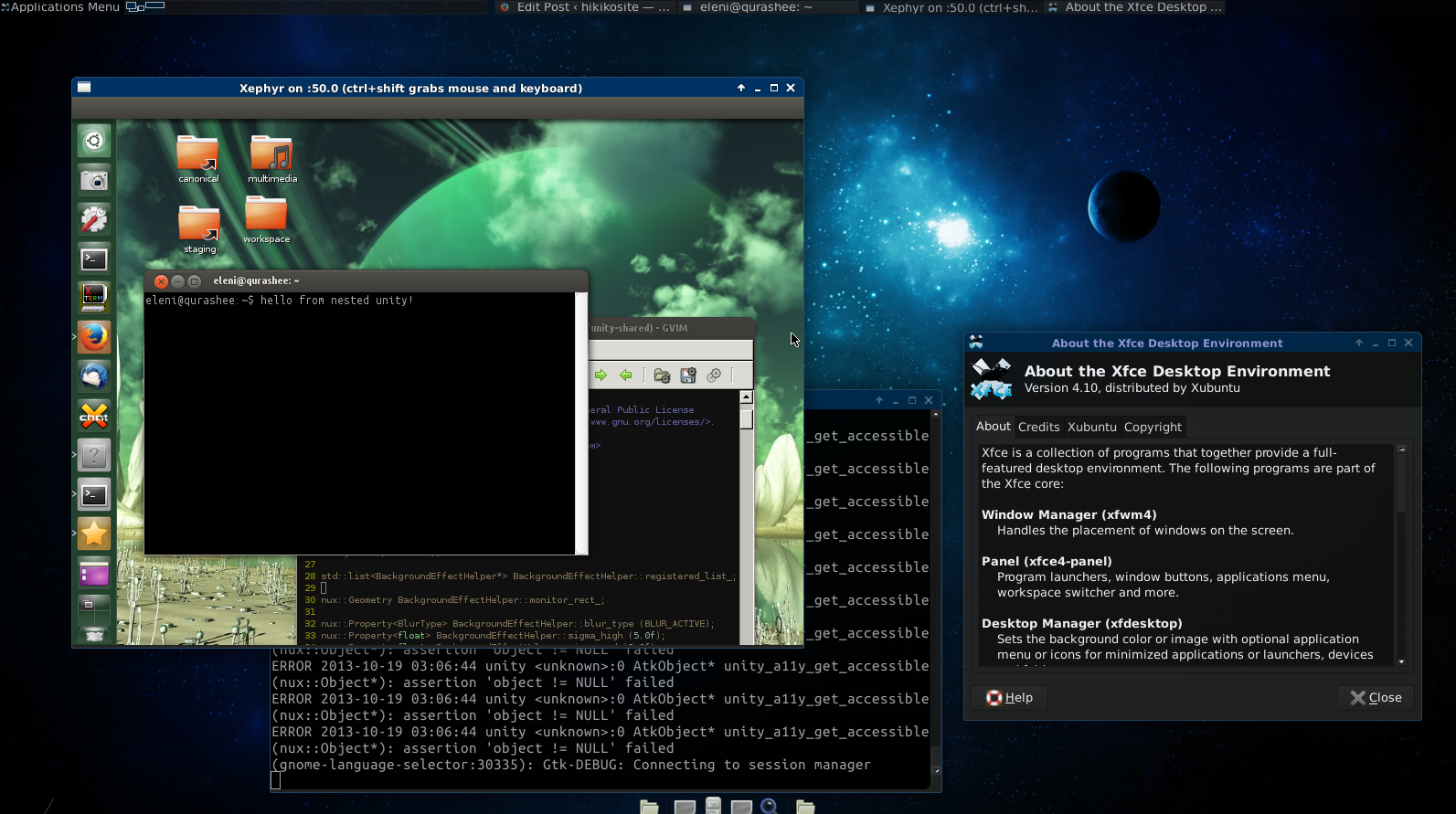HOW TO build the Ubuntu Desktop
This tutorial assumes that you have already installed the Ubuntu Desktop dependencies and development tools mentioned in Part 3/5.
In this post I’ll explain what I usually do to build the Ubuntu Desktop in a local directory (let’s call it ubuntu) and test it on my machine. If you need a quick full build using a script (recommended!) please check these steps here: “HOWTO build the Ubuntu desktop using scripts”
First of all, I create the directory:
Continue reading Compiz Introduction and Demo Part 4/5: Build the Ubuntu Desktop

